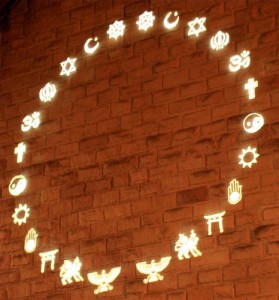
“We are all children of the same Universe.”
That is the main tenet behind the philosophy of the Universal Life Church. When you get ordained, you become an interfaith minister in the truest sense of the word; you serve those who believe in their creator, regardless of race, religion, nationality, or sexual orientation.
The idea that we all share common beliefs and values, no matter by what means we arrive at or express those beliefs and values, is paramount to the core philosophy of the Universal Life Church and, ideally, to all of those who get ordained as an interfaith minister in our Church.
However, this is not a new concept. The notion was first put forth by John Rawls, who coined the term “overlapping consensus,” in his “Theory of Justice.” It was used as the basis of Charles Taylor’s nominal work “Conditions of an Unforced Consensus on Human Rights” as the foundation for true peace and equality in a modern and enlightened society.
Overlapping consensus is the idea that society functions best when persons agree on certain norms that govern human behavior, while agreeing to keep in check differences in why these are the proper norms. This applies to political, national, and religious beliefs.
He uses as an illustration the fundamental differences between the Eastern idea that all members of society should act in concert for the common good as opposed the more individualist nature of Western thought, while reaching the same conclusions concerning the nature of the implied rights of society in general.
These norms can be described as Universal rights; basic rights that we all share as the essence of our humanity. While there is no universal agreement on the full extent of these rights or an exact enumeration of what they are, Taylor believes that is essential to the future of modern civilization the we come to a general understanding of certain basic fundamentals that we can all agree on as necessary for peaceful coexistence without the need to justify why they are right.
In other words, there are certain things that we instinctively ‘know’ as an enlightened species. Taylor refers to them as subjective rights, differentiated by natural rights that we are all born with and those rights that are conferred by law.
I think we can all agree on the following:
– People have a right to dignity as human beings.
– People have the right to live.
– People have a right to freedom in their associations and beliefs, free from prejudice.
The Dalai Lama recently reiterated this sentiment when he stated that we should teach and reinforce core moral values; the ideas of peace, justice, equality, and love for our fellow beings. However, since the main source of conflict and division in and between organized religions and differing faiths is in matters of dogma and not ideology, it is best to focus on non-religious teaching to impart these ideals.
Simply put, don’t clutter the essential message with insignificant details that don’t matter in the long run. It is only when we agree put aside our differences and focus on our common beliefs and goals that there can be true peace and equality in the world.


